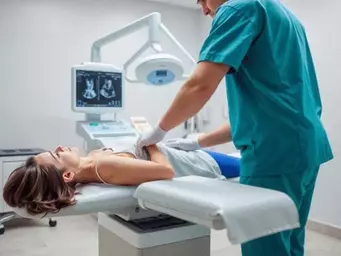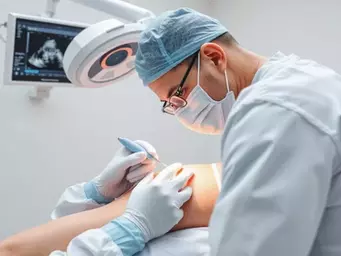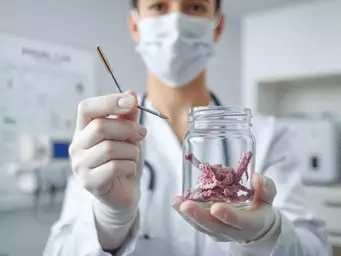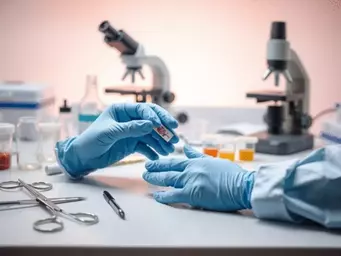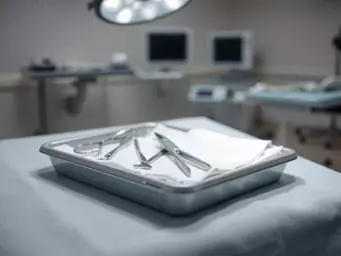When it comes to understanding your skin health, there’s no room for uncertainty. Recognizing the types of skin biopsies and their purposes can empower you to take proactive steps in your healthcare journey. So, what can you gain from this article?
What You Will Learn
- Skin biopsies are crucial for diagnosing skin conditions, including infections and cancer.
- There are three primary types of skin biopsies: shave, punch, and excisional, each serving specific purposes.
- Understanding biopsy types helps patients engage in informed discussions with their healthcare providers.
- Early detection of skin cancer through biopsies can significantly improve treatment outcomes.
- Patients are encouraged to document skin changes and stay proactive about their skin health.
Skin Biopsy Types Overview
This visual summarizes the three primary types of skin biopsies, their purpose, and what they are best suited for, helping to clarify their distinct roles in dermatological diagnosis.
Shave Biopsy
Purpose: Remove a thin layer of skin.
Best For: Superficial lesions, minimal tissue sampling.
Punch Biopsy
Purpose: Remove a deeper core of skin.
Best For: Deeper lesions, full-thickness tissue sampling.
Excisional Biopsy
Purpose: Remove an entire lump or abnormal area.
Best For: Comprehensive lesion removal, suspected malignancies.
Understanding Skin Biopsy Types and Their Importance
When you hear the term skin biopsy, it might sound daunting. However, understanding what it entails can significantly ease your mind. A skin biopsy is a procedure where a small piece of skin is removed for testing. This helps in diagnosing various skin conditions, including infections, inflammatory diseases, and, importantly, skin cancer.
At What Is A Biopsy, we aim to simplify these processes for you. Knowing the different types of skin biopsies and their purposes can empower you to make informed decisions about your health. Let's explore the essentials!
Defining Skin Biopsy: What You Need to Know
A skin biopsy involves the removal of skin tissue for laboratory analysis. There are three primary types of skin biopsies: shave biopsies, punch biopsies, and excisional biopsies. Each type varies in technique and is chosen based on the skin condition being evaluated.
- Shave Biopsies: Involves shaving off a thin layer of skin.
- Punch Biopsies: Uses a circular tool to remove a deeper core of skin.
- Excisional Biopsies: Involves removing an entire lump or a significant part of the abnormal area.
Each biopsy type serves a distinct purpose, and understanding these can help alleviate any fears you may have about the procedure.
Why Skin Biopsies Are Essential in Dermatology
Skin biopsies play a crucial role in dermatology for several reasons. They allow dermatologists to accurately diagnose skin conditions and tailor treatment plans effectively. Here are some key reasons why skin biopsies are essential:
- They provide definitive diagnoses of skin disorders.
- Biopsies help distinguish between benign and malignant lesions.
- They assist in monitoring the effectiveness of treatments.
By facilitating accurate diagnoses, skin biopsies lead to timely interventions and better patient outcomes. Remember, these procedures are designed with your health in mind!
The Role of Skin Biopsies in Skin Cancer Diagnosis
One of the most critical applications of skin biopsies is in the diagnosis of skin cancer. When a suspicious mole or lesion is identified, a biopsy can determine whether it is cancerous. Understanding this role can be life-saving! For instance, research published in PMC NCBI highlights the significance of biopsies in diagnosing melanoma, a serious form of skin cancer.

- Detecting early-stage skin cancer significantly increases the chance of successful treatment.
- Biopsies can differentiate between different types of skin cancers, which can influence treatment decisions.
- Regular skin checks combined with biopsies can help in early detection of changes in the skin.
At What Is A Biopsy, we are committed to ensuring that you have all the information necessary to understand your health choices. Knowing the importance of skin biopsies is the first step towards taking charge of your skin health!
Frequently Asked Questions (FAQs) About Skin Biopsies
What is a skin biopsy?
A skin biopsy is a medical procedure where a small piece of skin is removed for laboratory testing to diagnose various skin conditions, including infections, inflammatory diseases, and skin cancer.
What are the three primary types of skin biopsies?
The three primary types are shave biopsies (removing a thin layer), punch biopsies (removing a deeper core of skin), and excisional biopsies (removing an entire lump or abnormal area).
Why are skin biopsies important in dermatology?
Skin biopsies are crucial for accurately diagnosing skin disorders, distinguishing between benign and malignant lesions, monitoring treatment effectiveness, and facilitating timely interventions for better patient outcomes.
How do skin biopsies help in skin cancer diagnosis?
Biopsies are vital for determining if a suspicious lesion is cancerous, differentiating between types of skin cancers, and aiding in early detection, which significantly improves the chances of successful treatment.
What are some common skin disorders that may require a biopsy?
Common conditions include Basal Cell Carcinoma, Squamous Cell Carcinoma, Melanoma, and various pigmented lesions that need evaluation for potential dysplasia.
Interactive Poll: Your Thoughts Matter!
As we continue exploring the critical role of skin biopsies, we want to know your perspective! Have you or someone you know undergone a skin biopsy? How did the experience impact your understanding of skin health? Share your thoughts below:
Summarizing the Differences Among Skin Biopsy Types
When it comes to understanding the various skin biopsy types, it's essential to recap the key points. Each biopsy type serves a specific purpose and is selected based on the characteristics of the skin lesion being examined. Here’s a quick summary of when to choose each biopsy type:
- Shave Biopsy: Ideal for superficial lesions that require minimal tissue sampling.
- Punch Biopsy: Best for deeper lesions, allowing for a full-thickness tissue sample.
- Excisional Biopsy: Recommended when a comprehensive removal of the lesion is necessary.
This understanding is crucial for both patients and healthcare providers. Recognizing the appropriate context for each type can significantly impact diagnosis and treatment plans.
Understanding the Role of Biopsies in Skin Cancer Diagnosis and Management
Biopsies play a pivotal role in the diagnosis and management of skin cancer. They help determine whether a suspicious lesion is benign or malignant, guiding treatment options. For instance, a timely biopsy can lead to early detection of melanoma, significantly improving patient outcomes. The importance of rapid and accurate diagnosis is underscored by studies such as those highlighted in Frontiers in Medicine, which discuss innovations in skin cancer detection.

In addition to diagnosing skin cancer, biopsies can provide valuable information about the specific type of cancer present. This, in turn, can influence the treatment plan and follow-up care.
Common Skin Disorders and Their Indications for Biopsy
There are several skin disorders that may warrant a biopsy. Some common conditions include:
- Basal Cell Carcinoma: Often presents as a pearly bump or sore that doesn’t heal.
- Squamous Cell Carcinoma: Usually appears as a firm, red nodule or a flat lesion with a scaly crust.
- Melanoma: Can manifest as a new mole or a change in an existing mole, particularly if it becomes asymmetrical or multi-colored.
- Pigmented Lesions: Benign or atypical moles that may need evaluation for potential dysplasia.
By understanding these indications, patients can be proactive in discussing their skin concerns with healthcare providers. Early intervention can be key to successful treatment!
Taking the Next Steps: Empowering Patients and Clinicians
How to Discuss Biopsy Options with Your Healthcare Provider
Open communication with your healthcare provider is essential when considering a biopsy. Here are some tips for having that important conversation:
- Prepare a list of questions related to the biopsy procedure, recovery, and potential outcomes.
- Discuss any concerns you have about pain or discomfort during the procedure.
- Ask about the specific reasons for recommending a biopsy in your case.
By being prepared and proactive, you can feel more confident in your decision-making process and better understand the next steps.
Encouraging Patients to Stay Informed About Their Skin Health
Staying informed about your skin health is crucial! Regular self-examinations and awareness of changes to your skin can lead to early detection of issues. I always encourage my patients to maintain a skin health journal where they can document any changes or concerns.
Patient Education on Biopsy Processes and Expected Outcomes
At What Is A Biopsy, we strive to educate patients on what to expect during a biopsy. Here's a brief overview of the typical process:
- Consultation: Discuss the need for a biopsy and what it entails.
- Procedure: The biopsy is performed under local anesthesia, ensuring comfort.
- Recovery: Minimal downtime is expected, with instructions provided for care.
- Results: Follow-up appointments to discuss findings and next steps.
Understanding this process can alleviate anxiety and empower patients to take charge of their health!
Invitation to Engage and Learn More
Share Your Experience: Biopsy Stories and Insights
Have you undergone a biopsy? Sharing your story can help others feel more at ease with the process. We invite you to share your experience in the comments below!
Stay Updated on Dermatology Innovations and Techniques
Lastly, keeping up with the latest advancements in dermatology can enhance your understanding and preparedness regarding skin health. Follow our blog for regular updates and insights on new techniques and practices in the field!
Recap of Key Points
Here is a quick recap of the important points discussed in the article:
- Types of Skin Biopsies: Understand the three primary types - shave, punch, and excisional - each serving specific diagnostic purposes.
- Importance in Dermatology: Skin biopsies are essential for accurate diagnoses, distinguishing between benign and malignant lesions, and monitoring treatment effectiveness.
- Role in Skin Cancer Diagnosis: Biopsies are crucial for detecting skin cancer early, which significantly enhances treatment success rates.
- Common Indications: Recognize skin disorders that may require a biopsy, including basal cell carcinoma, squamous cell carcinoma, and melanoma.
- Patient Empowerment: Engage in open discussions with healthcare providers about biopsy options and stay informed about skin health.




